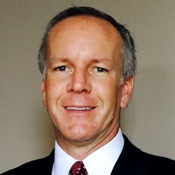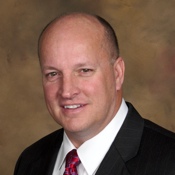 Many suppliers to the industry have worked hard to assemble teams of professional services experts who can work with customers to help them improve customer service levels, profitability and find innovative ways to solve customer problems. We recently spoke with Canon Solutions America’s professional services leadership team to find out how the need for professional services is changing and what Canon Solutions America is doing to meet those evolving needs. Our conversation with James Sharp, Executive Vice President, Professional Services; Ed Jansen, Vice President, Production Print Solutions, Professional Services; and Robert Abernathy, Senior Director, Large Format Solutions, Professional Services, follows.
Many suppliers to the industry have worked hard to assemble teams of professional services experts who can work with customers to help them improve customer service levels, profitability and find innovative ways to solve customer problems. We recently spoke with Canon Solutions America’s professional services leadership team to find out how the need for professional services is changing and what Canon Solutions America is doing to meet those evolving needs. Our conversation with James Sharp, Executive Vice President, Professional Services; Ed Jansen, Vice President, Production Print Solutions, Professional Services; and Robert Abernathy, Senior Director, Large Format Solutions, Professional Services, follows.
WTT: Jim, what are the key drivers for the growing demand for professional services, in your opinion?

James Sharp: I think the key driver in one simple word is efficiency. This is not new, but more than ever before, we see customers looking to Canon Solutions America to help them be more efficient in what they do and how they do it. Their goal is faster and more informed decision making and gaining a competitive edge as a result of that.
WTT: At what point are you usually engaged?
JS: We are seeing engagement much further up the food chain than ever before. We are engaged far earlier in the sales cycle now; customers are coming to us not for a hardware solution but rather, asking our sales people for consultation around software solutions that can help them be more productive, make faster decisions and gain a competitive edge. That is different from yesterday’s professional services which evolved out of installation services and problem resolution. They are now coming to us before a hardware decision is even made.
WTT: What kind of close rates do you see when professional services is involved pre-sales versus when they are not?
JS: When our professional services team is engaged side by side with our hardware group, we find that the close rate for presale activity is much higher than it is for the box-only RFP “answer-the-question-in-the-box” type of engagement. I can’t talk to exact close rates, but certainly, if we are able to propose a comprehensive hardware and software solution, and we have done our homework to demonstrate a firm ROI, the chances for success are a lot higher than they are in a commodity-based machines-only sales effort.
WTT: And from the customer’s perspective? What is the benefit to them of a professional services based approach?
JS: From the customer’s perspective, the end result is certainly better. They typically do achieve improved efficiency, faster decision making and a competitive advantage. We recently held a customer VIP day with about a dozen customers. I asked how many had bigger budgets this year than last year. No hands, not surprising. How many are being asked to do more with the same budget? About half. “How about how many of us even got a budget?” someone shouted out. If you can demonstrate an ROI with a solution that is a combination of software, hardware and professional services, customers are willing to listen because it helps make them more efficient and better manage potential budget shortfalls. This fact-based approach also helps them sell the investment internally.
WTT: Ed, I know that commercial print is a key target market for Canon; through the Océ business, you have traditionally had a larger presence in the in-plant environment. How do you compare the two with respect to their propensity to use professional services?
 Ed Jansen: If you look back three to five years in the commercial print space, it was definitely not that receptive of a market. In-plants are definitely more receptive. But as some of the market challenges have eased, there seems now to be more openness to the professional services offering. One thing that is without a doubt, they really do look to us to provide not just the box, but how does it integrate within their environment and make their business more productive and cost effective. The financial elements have loosened up; that’s the biggest change lately in the commercial print space. One thing we are seeing in commercial print is the fact that many businesses tried to implement things themselves, such as web-to-print, centralized ticketing functions and a composition strategy—having all of that work together. Many have found that they are better served by bringing in outside experts to help with this process.
Ed Jansen: If you look back three to five years in the commercial print space, it was definitely not that receptive of a market. In-plants are definitely more receptive. But as some of the market challenges have eased, there seems now to be more openness to the professional services offering. One thing that is without a doubt, they really do look to us to provide not just the box, but how does it integrate within their environment and make their business more productive and cost effective. The financial elements have loosened up; that’s the biggest change lately in the commercial print space. One thing we are seeing in commercial print is the fact that many businesses tried to implement things themselves, such as web-to-print, centralized ticketing functions and a composition strategy—having all of that work together. Many have found that they are better served by bringing in outside experts to help with this process.
WTT: From my observations, one thing that seems to be increasing is the need for printing operations to integrate with external systems—customer databases, ERP systems and the like. Are you seeing this in the market?
EJ: Yes, there is more demand for integration with external systems and also with non-Canon-supplied products in their own operations. As a result, our professional services group has become more of an integrator. The intent today is not to replace an environment but to leverage what is there into an integrated operation. In addition, printing operations are looking to better control inventory and tie inventory processes directly to what is happening on the shop floor. So for example, if there is an activity planned for three days out that requires inserts or some other prepared material that may not be on site or has to be delivered, an integrated workflow will provide notifications and help automate the coordination of these things. Plus, when a job is shipped, the shipping module should alert the invoicing system automatically so invoices can be generated. There is a tremendous amount that can be done with even these simple things to streamline processes.
In terms of integration with customer systems, things like single-sign-on to an easy-to-use and role-based customer dashboard is growing in popularity. And while we have a lot of these components, if it doesn’t make sense for our component to be the point of entry, we can integrate with what is already there in the end customer or print service provider configuration, providing feedback into those systems. We can do it either way.
WTT: Where do you find the right people for execution of these services, and what type of people are you looking for?
JS: When we are looking for a project manager, solutions consultant or systems support engineer, printing industry experience is not always where we end up. We are typically hiring people with more general skills around technology and the ability to grasp our training programs in a learning environment. These are more often people with experience in a technology similar to ours, not necessarily sourced from competitors.
 Robert Abernathy: In the display graphics segment, there is typically a lot of industry knowledge required that goes with how to use a graphics-type printer, but we are also looking for people that are innovative. With a maturing flatbed printer market, customers have to be more innovative to stay competitive, and that requires us to have skills that can meet that need. We are more often looking at people in design, where we might not have before, because customers are pushing us to be more innovative and design professionals tend to bring that kind of innovative thinking.
Robert Abernathy: In the display graphics segment, there is typically a lot of industry knowledge required that goes with how to use a graphics-type printer, but we are also looking for people that are innovative. With a maturing flatbed printer market, customers have to be more innovative to stay competitive, and that requires us to have skills that can meet that need. We are more often looking at people in design, where we might not have before, because customers are pushing us to be more innovative and design professionals tend to bring that kind of innovative thinking.
WTT: How about some examples?
RA: It used to be primarily printing signs and banners. But now people are printing on a wide variety of different substrates—hockey pucks, stone, guitars, countertops, tiles, just about anything you can think of. There is also what we call 2.5D printing, raised printing, think Braille. There are a lot of buildings that still need to update signage to meet ADA requirements. Some of those different substrates and techniques present unique problems that our professional services team can help solve. So we do these types of R&D services both pre-sales and post-sales. This requires innovative thinking, and that’s what we are looking for in people.
WTT: You also play in the document sector of the large format market. What’s going on there?
RA: In terms of architectural/engineering/construction (AEC), market contraction caused a lot of these companies to significantly reduce staff. Now with the market rebounding, they often need quick access to legacy documents, sometimes driven by litigation. Many of those drawings are on paper in storage rooms. There is a terrific opportunity here to digitize this information, and we have some great tools and partners to do that. Utility companies is another area. Ten years ago, no one really thought that much about the security of the grid, but it is a critical consideration now and the plans and documents for the grid need to be securely managed and stored. These are areas where our professional services offerings can really help in designing a safe and efficient solution.
WTT: Any final thoughts before we close?
JS: There have been a lot of positive synergies with the Canon/Océ integration in the professional services and solutions area in the last year and a half. Some synergies you can forecast in an organizational integration like this, such as shared services. Others are not so easy. We think we have done a good job of putting all of the professional services groups from both companies under one umbrella. We are a team of close to 400 people. We meet frequently as a group, exchange ideas in both formal and information communications. Our consultants and analysts are also sharing experiences and know-how across the business units on a daily basis. I believe there are a lot of things we are able to do now that pre-integration we were not able to do. We are proud of those synergies, and of course, of our contribution to topline revenue. But the bottom line is that by leveraging our know-how across the entire organization, our customers are benefiting and that’s what’s most important.










Discussion
Join the discussion Sign In or Become a Member, doing so is simple and free